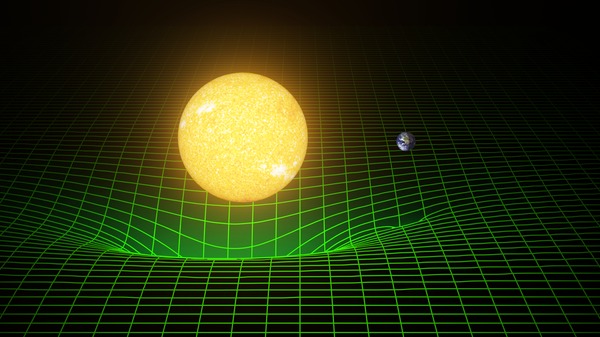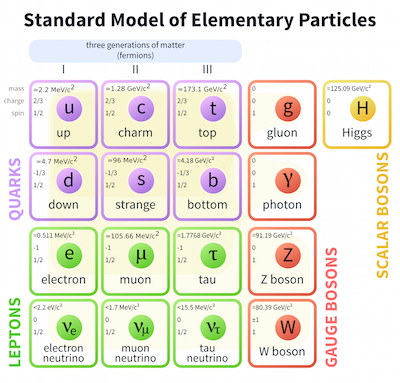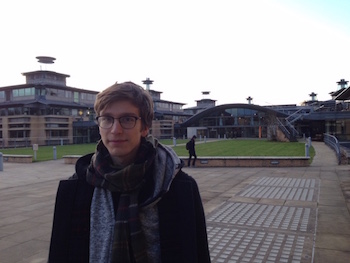

According to general relativity, a massive object warps the fabric of spacetime, visualised in this artist's impression by the green grid. Image: T. Pyle/Caltech/MIT/LIGO Lab.
So far, in the first three articles, I have been sweeping one big part of physics under the rug: gravity. The first theory of gravity was Newton's, and it describes gravity as a force between any two objects, pulling them together. However, our current best theory of gravity is Einstein's theory of general relativity. While both theories give approximately the same results in everyday situations, they are conceptually very different.
In Einstein's theory, gravity isn't really a force, but more like the shape of spacetime. The theory also predicts phenomena like black holes and gravitational waves. Experimental tests show that it is rock solid. For example, the LIGO experiment has recently enabled us to listen to astronomical events using gravitational waves. (You can read more in Listening to the Universe, and about some of the pivotal scientists responsible for LIGO, who won the Nobel Prize in 2017.)
Like the theories of particle physics that I have already told you about, we can summarise general relativity in a short equation, the Einstein equation: $$ R_{ab} - \frac{1}{2} R g_{ab} = 8\pi T_{ab}. $$ (Again, don't worry about what it means mathematically – though you can find out some of the details here.) Together, this equation and the one for the Standard Model (which you can find in the second article) basically constitute all known laws of physics.
There is a problem, however: we don't know exactly how gravity works together with quantum mechanics. Actually, gravity is the only force of nature that we haven't yet been able to describe as a quantum field. This is the problem of quantum gravity, one of the major remaining mysteries in physics. Most physicists think that QFT isn't sufficient to describe gravity, but that we need something entirely new (for example string theory or loop quantum gravity).
What else is missing?

The known fundamental particles/fields (Image MissMJ)
The picture that I have laid out for you – that nature consists of a fairly small number of quantum fields (as described by the standard model, in the table to the right) that interact with each other, and that the elementary particles are the weakest possible waves in these fields – is very nearly a complete picture of reality. Apart from the (big!) issue of quantum gravity, there are only a few loose ends, which nevertheless reveal that there is still much to discover. I won't go into any detail, just give a five-second introduction to some of them.
Dark matter: Through its gravitational effect on galaxies, we have detected some kind of invisible matter. We don't know what it is, but we have a few ideas.
Dark energy: Since the Big Bang, the universe has been expanding. But the expansion is speeding up while ordinary general relativity says that it should be slowing down. We don't know why.
Inflation: In the first few instants after the Big Bang, the universe seems to have gone through a mind-bogglingly quick expansion. A good guess is that this process was caused by some quantum field that we call the inflaton field (corresponding to a particle called the inflaton). This is probably a new field, outside of the Standard Model.
Neutrinos: In the Standard Model, neutrinos don't interact with the Higgs field, which means that they have no mass (as I haven't explained the Higgs mechanism in any depth, I will just ask you to trust me here). However, the discovery of neutrino oscillations (awarded the 2015 Nobel Prize) shows that neutrinos change over time. Since massless particles don't experience the flow of time (again, trust me, or ask Einstein), neutrinos must have mass. We are not quite sure how this works, and there are many more unsolved mysteries to do with neutrinos.
End of the road?
Congratulations! You now know, as far as we can answer it today, the answer to the question from the first paragraph of the first article: "What is everything made of?" What we know so far is enough to explain basically everything we experience in our lives: Everything is made out of the seventeen quantum fields of the Standard Model, and waves in these fields are the fundamental particles.

(Image by Andrew Hurley – CC BY-SA 2.0)
You have reached the edge of our current knowledge. We haven't found anything smaller than a quark, or anything more fundamental than a quantum field. The Standard Model describes all but a few experiments perfectly. Yet, physicists are never content with a theory of very nearly everything.
Historically, small discrepancies in experiments have often led us to discover a completely different new theory, to which the conventional theory was just an approximation. This happened with Newton's theory of gravity, and we hope to make it happen again with the Standard Model.
We are certain that the remaining mysteries hold the key to a deeper understanding of our world. From this point on, we have only a long list of speculations and not yet proof of any of them. Nobody knows where the next discoveries will take us; we can only be sure that it will be far.
About the author

Elias Riedel Gårding grew up in Stockholm and chose physics instead of programming for his undergraduate degree because his secondary school physics class was frankly not very good, and he wanted to see what he was missing. He has always been interested in the most basic laws of nature – those of fundamental physics – but it wasn't until his master's degree in theoretical physics that he got to study them properly. He thinks quantum field theory, the basic paradigm of particle physics, deserves to be more widely known, hence this article series.